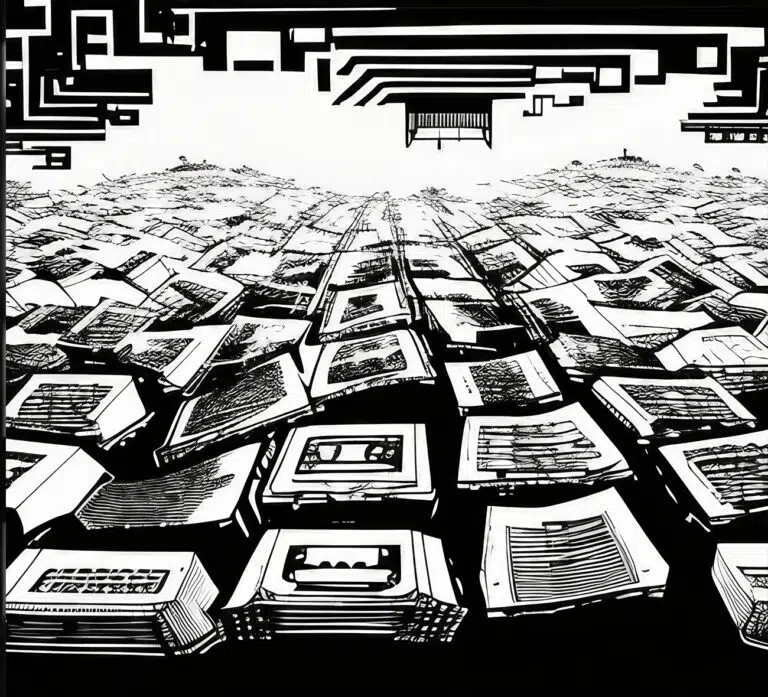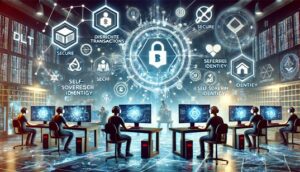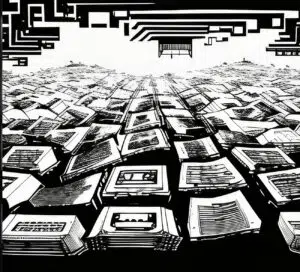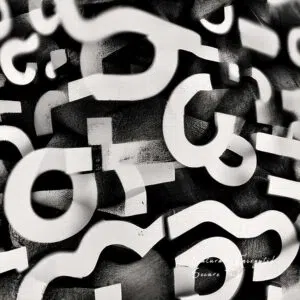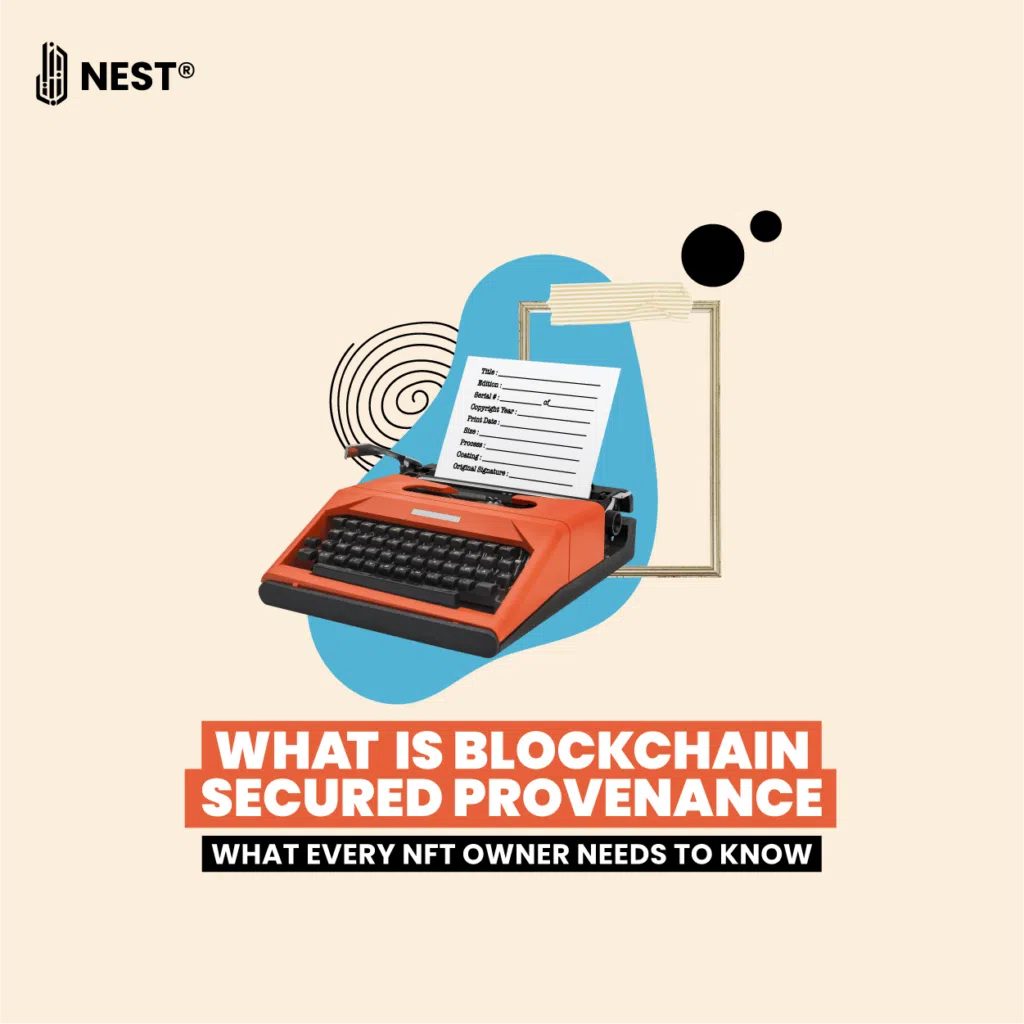
Ever wondered what you do or don’t own after buying an NFT?
The concept of authenticated provenance on blockchain enables you to verify changes in ownership information, secured on-chain, by tracking and tracing your verified digital assets. Documentation provides authenticity and source.
Put simply, “provenance” refers to the earliest place of origin of something. Derived from the French word provenir, or “to come from”, it is essentially the history of ownership behind an item – starting from its origin. By providing documentation about that item, provenance helps certify its authenticity.
When you buy NFTs, you don’t own the work itself, but rather the underlying registration or ‘pointer’ to its associated metadata. This metadata for an NFT can be an entry containing information encoded with a digital copy or version of the work that has been tokenized.
Right now, with an NFT, there’s no easy way to definitely claim ownership – anyone can simply copy an image, re-mint the NFT on the same or different networks, and potentially then claim this new NFT as their own or ‘original’ digital asset. This defeats the purpose of Distributed Ledger Technology (DLT) solutions.
DLT is the technological infrastructure of immutable, cryptographically secured documentation. By allowing unmediated and secure functioning of decentralized exchanges between databases, DLT is an immutable recording method used for various networks with the ability to be spread across multiple organizations or entities.
If there is no real-world or authenticated ownership control, as is the case with the typical NFT, then this digital asset has no ‘excludable characteristic’ – an economic concept taken from property rights indicating “the owner of a certain property may prohibit others from trespassing on it at his or her discretion.” It simply becomes open.
The same concept of property rights applies to NFTs, too.
Due to the initial lack of ownership control, copyright transfer cannot be held to be completed in common NFT sales. Subsequently, the risks of trademark infringement also may well come into play when “unauthorized parties mint NFTs linked to the underlying asset without the original owner’s permission,” after which they could offer or sell the NFT using the asset owner’s registered trademarks. This creates double trouble.
The History of Provenance, and Securing Provenance in Blockchain

In the traditional art world, provenance has long been associated with the business of purchasing unique, physical objects whose source was verified. This verification usually came from galleries, companies or auction houses and is used to distinguish an original work from a copy.
Traditionally, or in the physical world, people would buy a painting to hang on their wall and simply pay once to claim this right to ownership. The value of traditional art largely depended on the prominence of the creating artist or artwork, as well as the subject of the piece and its historical significance. It is also dependent on the artwork’s perceived cultural value, popularity or similar recognition.
Andy Warhol’s Eight Elvises (1963), for instance, was sold to a private collector for $100 million in 2009. Leonardo da Vinci’s Salvator Mundi became the most expensive artwork ever sold at $450 million in 2017.
The NFT market, on the other hand, typically does not involve the same method or setup in tangible transfers of ownership rights. The transfer of an NFT artwork, as typically executed, does not constitute a legal contract nor carry any form of associated ownership protections.
Pseudo-anonymous wallets as well as marketplace functions try to confer ownership protections. But in most exchanges, the seller does not offer to turn digital tokens into an actual physical transfer of copyright ownership for the original physical artwork, like a swap or exchange.
Most NFT artwork, or the master-file itself, is not usually kept or stored in a blockchain network. This is partiallywhy the ownership of artwork NFTs are crucial when it comes to the use of NFTs across most all of the creative fields. Through NFTs, content creators and art collectors have potential access to means that certify authorship, establish authenticity and secure verified ownership control of artwork.
Because of the current structure, direct ownership control of master-file assets is one of the missing prerequisites. Whether it be buyer or seller, the person with confirmed ownership control must be able to create and enter binding legal exchange or transaction agreements stipulating the associated rights of transfer and usage. This methodology is used in the physical art world, and one that is maintained in the digital sphere as well – regardless of the technologies used to register or perform the transaction.
Some blockchain advocates argue that the code itself, or the pure fact of registration on-chain, sufficiently ascribes ownership control.
While there may be no real-world agreement where participants set smart contracts for execution on-chain, such cryptographically secured admin-right registrations – particularly as generated by pseudo-anonymous sources for transactions or exchange – cannot inherently set legal claims to data.
Generally, these are only immutable transaction or event logs that cannot be interpreted as a complete solution or a sufficiently detailed exchange, in the traditional and legally binding ‘sales cycle’ classification.
NEST® Enables Real-World, Authenticated Provenance Using the First SSDID Solution of its Kind
In the real world, documentation of your physical identity, like your passports and credit cards verify your identity and ownership. These centralized implements help protect sensitive, personal information you are in sole control of. But these traditional forms of identity documentation cannot verify your digital assets or identity in the same way. They were never built to.
Typical NFT wallets, creation processes, transfers and transactions hold no real user details or proofs – they are entirely anonymized and by design. Apart from asset security, there can be no future or subsequent, tangible authenticated provenance on blockchain.
NEST® is the first and only omni-solution of its kind, actively enabling confidentially executed, user-led provenance, verified ownership, digital asset creation and persistent authentication. We set privately enacted ownership-control capacities for all users. Based firstly on user-set individual encryption, each data wallet and private, legal exchange allows for unlimited engagement smart contract variation.
Our proprietary, layer-zero-to-one and confidentially held blockchain identity authentication enables the global infrastructure of the Web3 economy, wherein users easily gain confidential ownership control across the decentralized world.
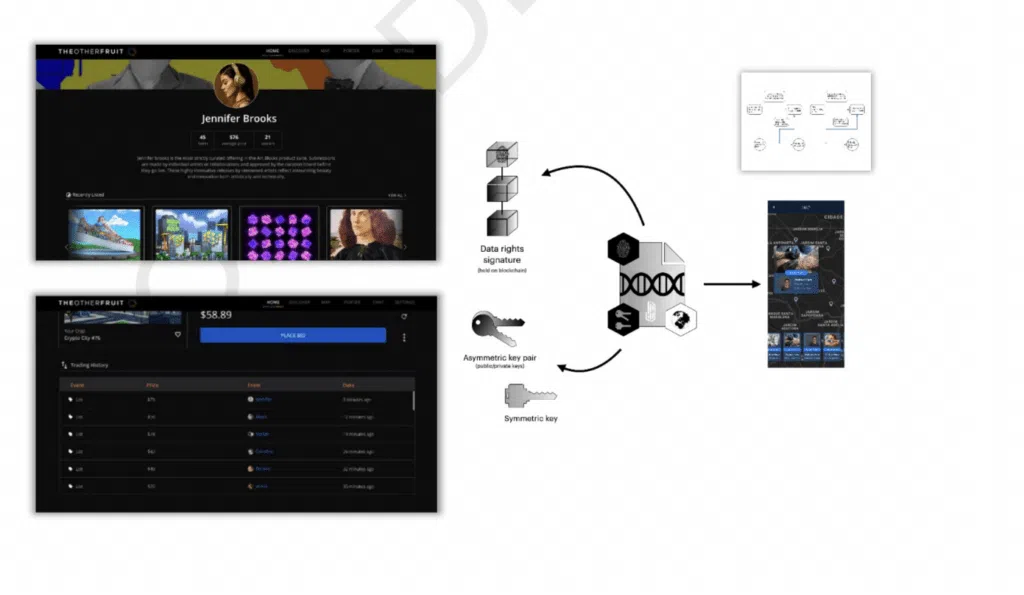
NEST®’s patented ecosystem structure and self-sovereign distributed identity (SSDID) technology confidentially secures all purchases, transactions, and exchanges with blockchain provenance. This is a personalized, individual form of hyper-encryption – one that can be used in legally-binding contracts, namely those involving NFT creators, buyers and sellers.
With every upload, transaction or minting of a digital asset, an individually encrypted, blockchain secured form of provenance authentication is generated. This is further seen through the Instant Visual Blockchain Result Page (IVBRP®), which allows for instant access without any requirement for complex navigation of block-explorers.
Regardless of the asset type, NEST® adds true authenticated blockchain provenance and naturally, concurrent audit trails, as well as legal contractual exchange across the Web3 ecosystem.
If you’re ready to join the Web3 revolution and ensure your confidential ownership control using next-gen digital asset authentication, follow NEST® on Twitter and Medium.

